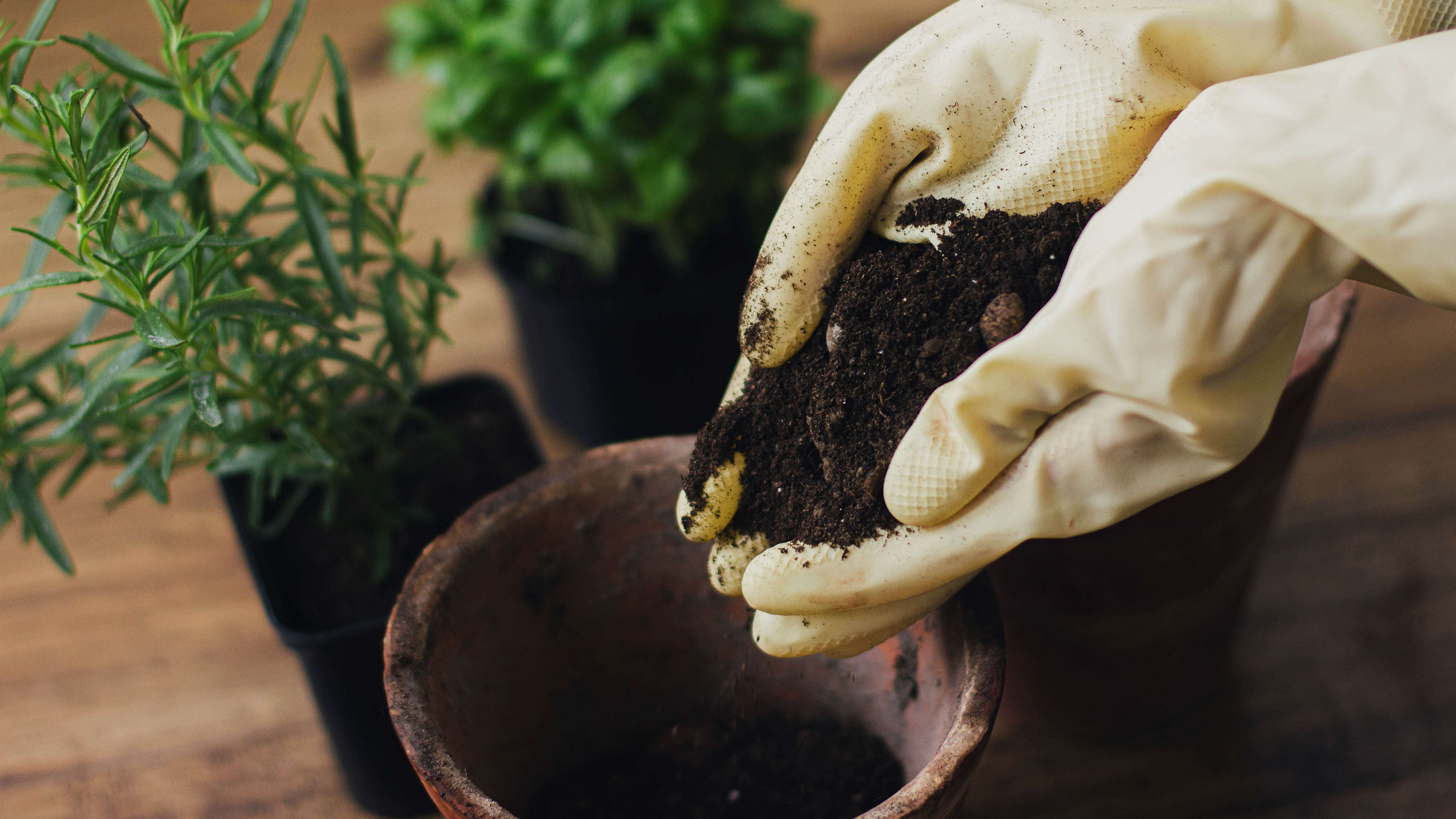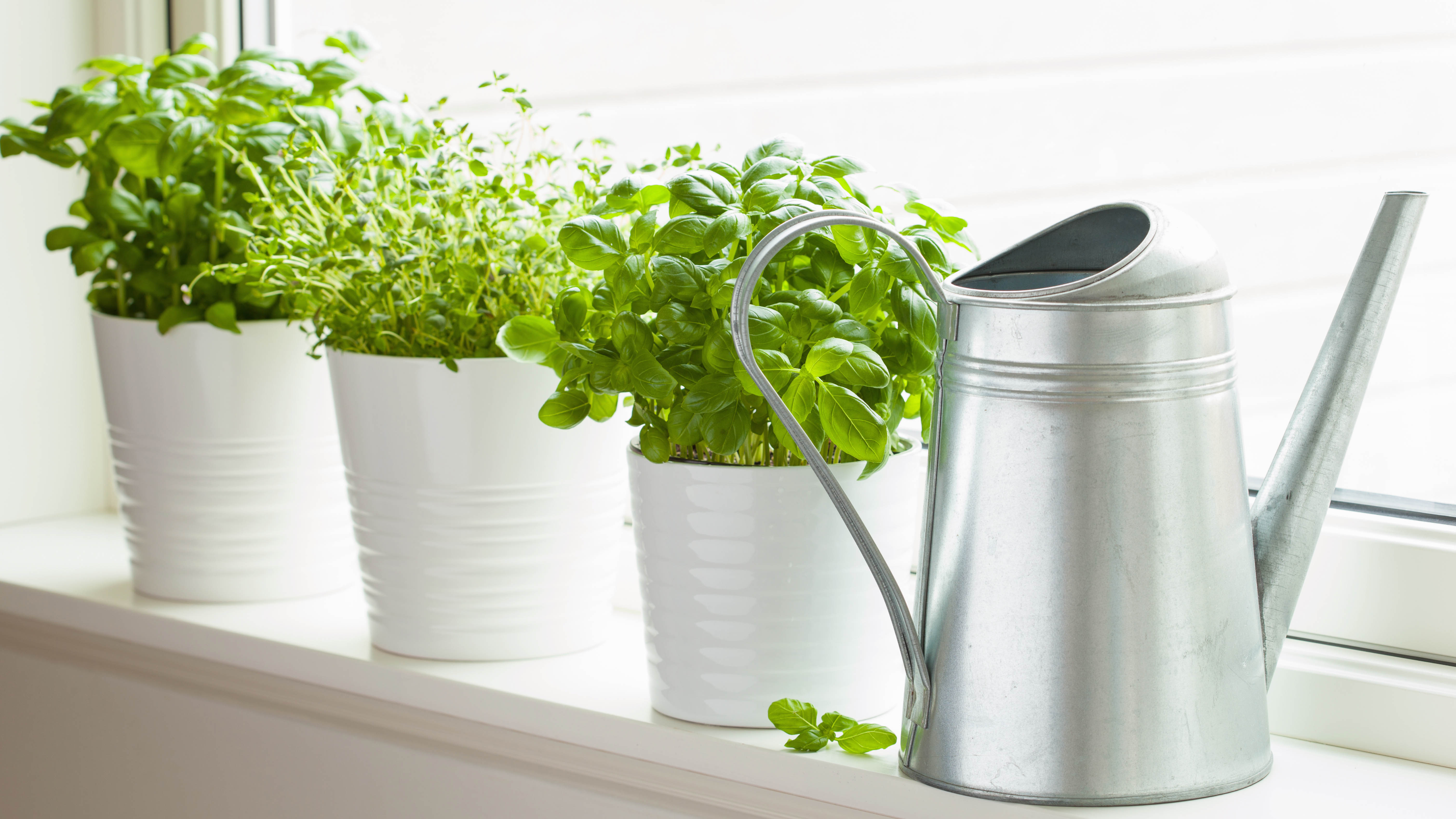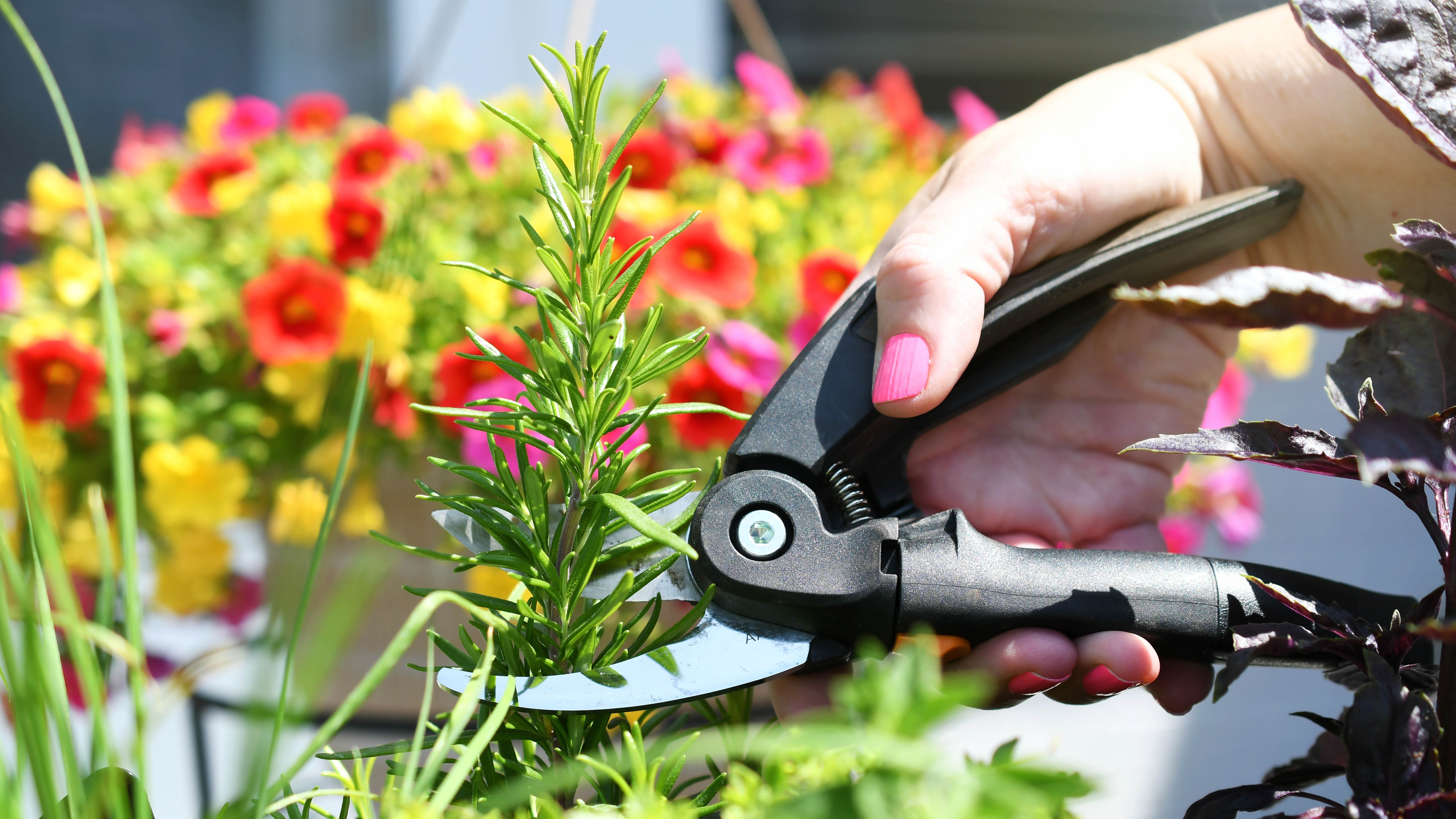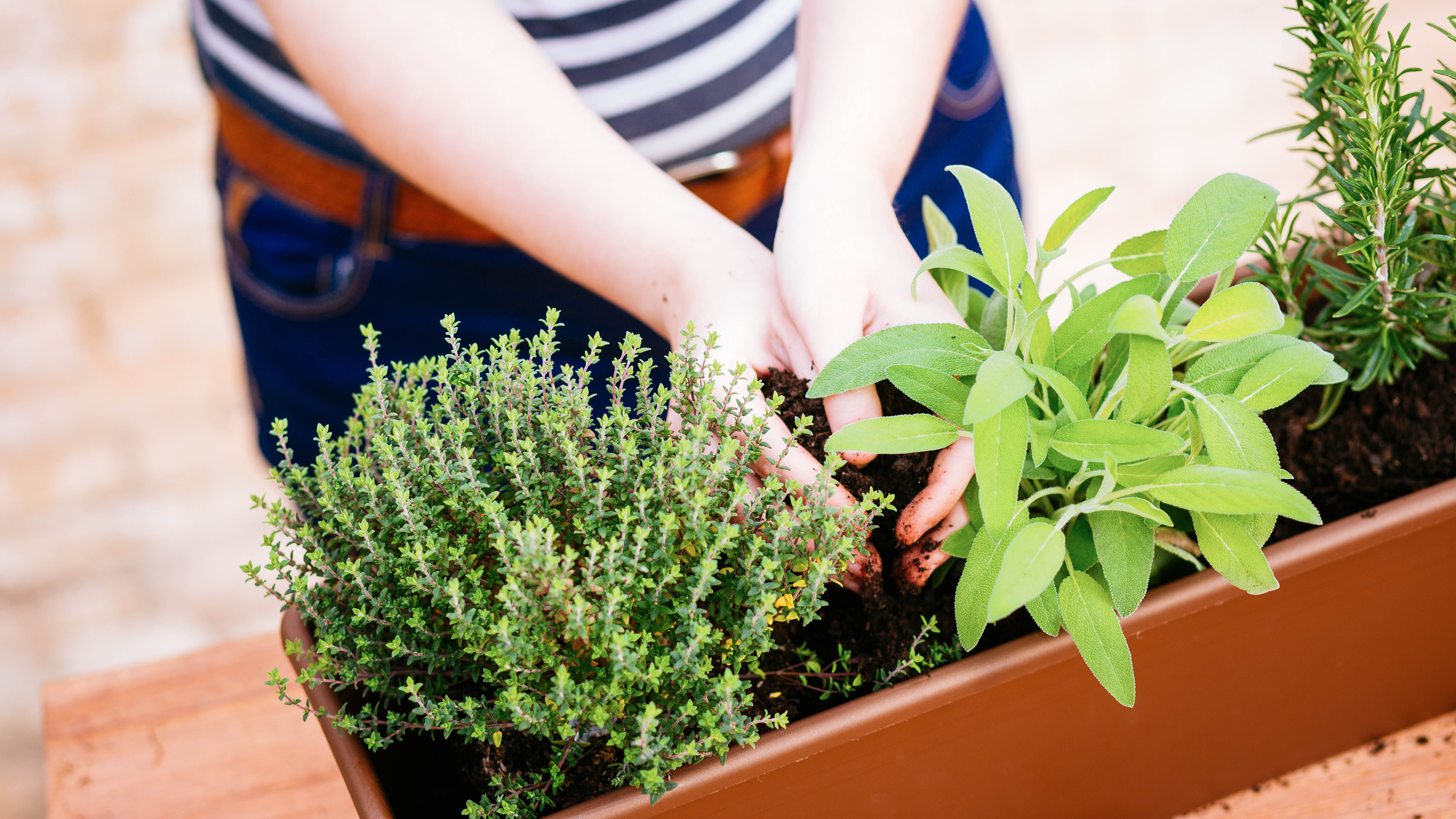7 mistakes it’s all too easy to make when growing herbs
Are you making any of these common mistakes when growing your herb garden?

Growing your own herb garden is a rewarding experience. You can raise your plants from seedlings and reap the benefits once the leaves are ready to harvest. Whatever herbs you choose to grow, be it rosemary, mint or sage, each plant requires particular care to get the best results — that means there’s often a learning curve involved for newbies. But, regardless of whether you’re a novice or an experienced herb gardener, there are still several mistakes often made.
Such mistakes can affect the growth rate of your plants as well as the quality of your final harvest. In extreme situations, you might be doing more harm than good, damaging the herbs involved.
If you’re keen to learn what habits to avoid and what to do instead, we’ve broken them down here, so you can get your herb garden looking as good as it should. Here are 7 mistakes to avoid when growing herbs.
Lacking space, but still want to grow? Here are 5 easy ways to grow a vertical garden and here are 7 best vegetables to grow indoors. Just beware of these 7 mistakes to avoid when growing vegetables.
Also, a garden expert reveals that herbs are one of the 3 seeds you should be planting in the spring.
1. Using the wrong soil

Most herbs will do well in everyday potting soil or compost from your yard, while Mediterranean herbs, such as rosemary or parsley, thrive in hotter climates, and prefer a gritty consistency. In any case, herbs need a loamy soil which is fast-draining. This is so water can drain freely, rather than being over-exposed to the roots, which encourages root rot. So standard compost from your yard might not always yield the best results, particularly if there’s clay in the mix. You can buy dedicated soil suitable for herbs widely online, an example being Burpee Premium Organic Potting Natural Soil Mix ($12.99, Amazon).
Make sure you take pH levels into account as well, particularly if you decide to go ahead with regular compost in your yard. Different herbs prefer varying levels of pH, but most are generally happy with a slightly acidic soil between 6.0 and 7.5. Use a soil test kit, such as MySoil Soil Test Kit ($29.99, Amazon) to check the conditions and make adjustments as necessary.
Get instant access to breaking news, the hottest reviews, great deals and helpful tips.
2. Watering inappropriately

All plants require water, but it’s often tricky to tell how much to apply and how often. When it comes to herbs, many of us will leave such plants for longer than necessary between applications — we wait until it's obvious that the plant requires water, with wilting leaves and cracked soil. On the other hand, it’s not uncommon to overwater and drown these plants in an attempt to make sure they’re getting enough moisture. In either case, this is a habit to break.
The amount of water required will ultimately depend upon the herbs you’re growing. Mint and parsley prefer moist soil conditions on a regular basis, while woody herbs from hotter regions, such as rosemary, are more drought-tolerant and can last longer between applications. Do your research to understand the needs of each of your herbs and apply it to your watering schedule.
As a general rule of thumb, you should water your herb garden once or twice a week, but more or less often may be required depending on whether your herbs are kept in containers, as well as external conditions, such as the temperature. Feel the top inch of the soil for guidance — if it’s bone dry, it’s time for a drink.
3. Insufficient light

Herb gardens can make for attractive décor in the kitchen — it gives the space a more natural feel and adds to the convenience when you want to pluck leaves away for your meals. The trouble is, your kitchen doesn’t always receive adequate light for growing herbs, particularly if it’s lacking windows. That means your herbs might struggle to thrive in such conditions. However, if you do have a windowsill in your kitchen that gets plenty of light here are 7 herbs to grow on your windowsill.
Alternatively, outdoor herb gardens might not receive the best light levels either. Too much direct sun can cause as much damage as too little — resulting in scorched leaves and dehydration. Assess how many hours of sunlight your herbs receive per day and make sure it’s adequate, if not overpowering.
Light requirements and durability will vary depending on the herb in question. Some are hardier than others, and can withstand full sun for a prolonged time, such as lemongrass and sage. We recommend giving your herbs six hours of direct sunlight a day for general guidance, ideally using the morning sun, which is less aggressive versus the afternoon. Those herbs that grow well in the full sun, should have 6-8 hours of exposure a day.
4. Forgetting to prune

While you don’t want to waste what you’ve grown, pruning is still important when it comes to herbs. Pruning encourages fresh growth and promotes better air circulation for your plants. Plus, it keeps things tidy, which will be necessary should you choose to grow an invasive variety, such as mint.
For woody herbs, take a pair of your best pruning shears and cut diagonally from just above a leaf node — cutting at this angle prevents water from standing on the stem, leading to disease. You can cut away up to a third of the plant at a time. Dispose of the cuttings or store them in the fridge for use later. The majority of pruning should be done in the spring, or once it’s finished flowering, but you can trim away stems intermittently during the growing season too.
For leafy herbs, you don’t even need pruning shears, just pinch the tips you want to remove from just above the leaf nodes. Don’t pull or tear — the stem should break away from the pressure between your fingers. You can use pruning shears if you prefer though, and cut back by up to a third.
5. Crowding them together

While a group of collective herbs looks impressive in any herb garden, smushing them together in a small space won’t be doing them any good. In fact, in doing this you’re actively making them compete with one another for water and nutrients in the soil. In the end, the stronger, hardier herbs will likely smother the lesser aggressive ones.
If planted via containers, make sure your herbs each have a dedicated container with adequate space for them to grow and thrive. If you’re planting them outdoors, make sure you space them apart sufficiently so they each have room for the roots to spread. Bear in mind that invasive herbs, such as mint, are better kept in containers because they’re so unruly. Keep such plants in separate soil to the rest of your garden.
6. Letting it go to waste

There’s fun to be had no matter what type of herb you’re growing, but if you’re not taking advantage of the harvest, is there something better you could be growing instead? At the end of the day, these plants are edible, and whatever we grow should be used and not wasted.
You don’t necessarily have to eat what you produce, some plants can be cut away to repel pests. For instance, here are 7 plants that repel roaches for a bug-free home. Whatever you grow, make best use of the results. If you’re growing a herb just to toss it away, consider alternatives which you might make more use of.
7. Applying the same treatment

No herb is the same as another. The demands will vary for each when it comes to water, light, fertilizer and soil. So you shouldn’t be sticking to a schedule which provides the same conditions for every plant in your herb garden. While this is the convenient thing to do, it’s likely impairing some of the plants. While one might be thriving, another may be seemingly unhappy.
Take the time to learn the best care conditions for each herb you’re growing and consider this during your routine. It might be best to group those with similar demands so you can better navigate their needs. By improving the conditions for individual plants, your herb garden will flourish better as a whole.
More from Tom's Guide

Katie Mortram used to be a Homes Editor for Tom's Guide, where she oversaw everything from kitchen appliances to gardening tools, as well as smart home tech. Specializing in providing expert advice for cleaning and home manintenance, she now works as Household Advice Editor for Good Housekeeping.
